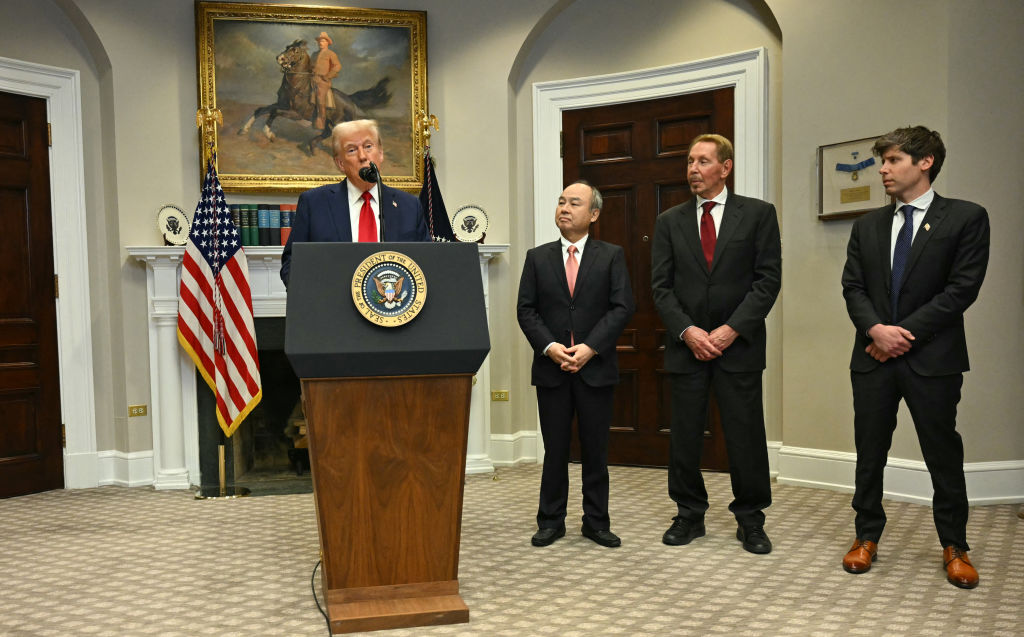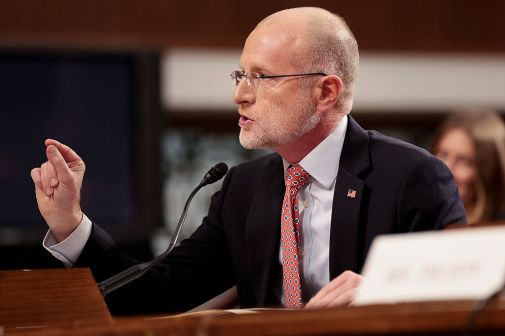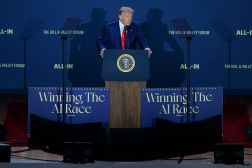Agency AI use case inventories must stay, groups tell Trump officials

More than a dozen civil society organizations are urging the Trump administration to keep in place guidance requiring federal agencies to maintain and update their artificial intelligence use case inventories.
In a letter sent Thursday to Office of Management and Budget Director Russell Vought and Michael Kratsios, the nominee to lead the White House’s Office of Science and Technology Policy, the groups said that keeping agency use case inventories current “is key in promoting transparent, efficient, and trustworthy AI adoption across the federal government and encouraging a robust and competitive ecosystem of public innovation.”
The letter — which was led by the Federation of American Scientists and signed by 17 other organizations, including Mozilla, Public Citizen and the Center for Democracy & Technology — noted that the AI use case initiative began during President Donald Trump’s first term in office.
A 2020 AI executive order and subsequent OMB guidance “clearly recognized the opportunity to promote AI adoption through transparency and public trust,” the letter stated, adding that use case inventories were “a pillar” of the government’s AI policies in Trump’s first term. That OMB guidance was signed by Vought, now in his second stint as the office’s director.
Kratsios, who served as chief technology officer during Trump’s first term, said when that first AI executive order was released that those policies would “foster public trust in the technology, drive government modernization and further demonstrate America’s leadership in artificial intelligence.”
Inventorying AI use cases across agencies in the years after Trump’s order was largely inconsistent, resulting in a patchwork tracking system that lacked standardization. The Government Accountability Office found that most AI use case inventories were “not fully comprehensive and accurate.”
Subsequent White House guidance and President Joe Biden’s October 2023 AI executive order aimed to address some of those shortcomings, though Trump rescinded that EO on his first day in office. A month before leaving office, the Biden White House released a consolidated list of federal use cases, with 37 federal agencies reporting 1,757 public AI uses.
Trump’s early AI moves have included ordering a review of the Biden administration’s work on the technology and a request for public feedback on his own AI action plan. He also touted a $500 billion AI infrastructure partnership with OpenAI, Oracle and Softbank, and signaled that private-sector deregulation and an emphasis on innovation would be major tenets of his AI policy.
The letter writers said the government’s work so far with AI use case inventories has spurred innovation and gained public trust by embracing accountability via transparency, tracking successes and impacts, supporting AI vendors and engaging with industry.
“We urge you to support the continuation of existing agency reporting guidance for federal AI Use Case Inventories,” the organizations wrote. “As the federal government seeks to increase its implementation of AI solutions in the coming years, these reporting practices for AI use cases are an essential tool for building trust, tracking outcomes, and informing innovation in the industry.”






